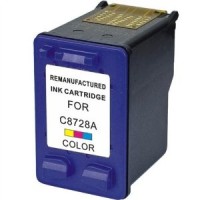 Sticking with the OEM is the best option for professional purposes, an article has stated.
Sticking with the OEM is the best option for professional purposes, an article has stated.
While costing about half as much as brand replacements, generic or third-party cartridges show a greater “gap in quality […] when you’re using a generic cartridge to perform high quality colour print jobs, like photographs or artwork”, the Notebook Review piece said. The difference in quality can even be seen “when printing text documents in black and white”, while another problem with generics is a “higher rate of ink overspray and blurred lines”: however, generic cartridges are recommended for quick drafts.
Another issue the review raised is whether or not using generic cartridges would void the printer’s warranty. The writer says that it won’t, as the Magnuson-Moss Warranty Act stipulates that “a manufacturer isn’t allowed to require that you use any specific brand of replacement accessory as a condition of your warranty”. Yet they claimed that a warranty may become void if the replacement cartridge was not intended for the specific make and model of the printer.
Turning to the question of warning messages when using third-party consumables, the analysis said that “onscreen error message[s]” are common when printing with non-recommended parts. Another potential problem is that “because generic printer cartridges aren’t compatible with the printer’s built-in software, your ink level readings may not report accurately”.
The piece concludes with the advice: “Before you permanently swear off generic print cartridges for the manufacturer’s recommended replacement, consider running a few tests of your own to compare performance. If you’re dissatisfied with the outcome of generic ink cartridges, you might arrive at the conclusion that spending a few extra dollars for the brand name is preferable to achieving a substandard end result.”
